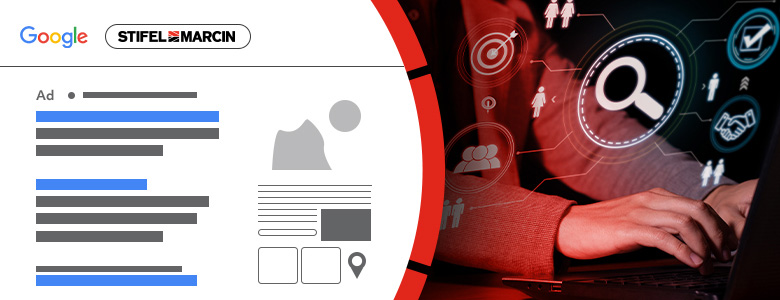In recent years, some B2B companies have found it harder to justify the high cost of attending multiple tradeshows. However, live contact with prospects and customers––outside of the standard sales call––is still a valuable marketing tool. At Stifel Marcin, we regularly work with B2B companies on the marketing strategy for trade shows. We can help to evaluate your show program, as well as assist in taking your face-to-face marketing beyond the trade show to build rapport and value with your audience.
Trade Show Value in the B2B Marketing Mix
Is the role of trade shows within the B2B marketing mix on the decline? The answer remains nuanced with data ranging by industry. Recent data shows a strong resurgence in sectors like technology, healthcare, and entertainment, while industries such as heavy manufacturing and construction continue to see lower attendance compared to pre-pandemic levels. Real-time feedback from marketing managers in manufacturing and industrial sectors indicates that many B2B companies are reassessing their trade show strategies, weighing increasing costs and mixed lead quality against potential networking benefits. While some events are experiencing growth, the increasing scrutiny of ROI and evolving digital marketing alternatives are influencing how businesses allocate their marketing resources.
Let’s face it; exhibiting at a trade show is a hefty investment. Costs include booth space, your exhibit and graphics, freight and drayage, on-site labor, utilities and services, travel, lodging, meals, entertainment, and the time commitment of vital staff. With this range of expenses, even a small regional show can cost a company tens of thousands of dollars and weeks of valuable time. And while in-person customer face time is essential, if enough leads aren’t being generated by show participation, the high costs and resource commitments are hard to justify. So, what are B2B industrial marketers to do? Here are some tips and tactics from our trade show agency experts.
Analyze Carefully and Choose Wisely
The first step is to analyze your trade show performance in detail. Some questions to ask are: What were the overall costs and their breakdown? Did we get quality leads? Can we follow-up quickly and effectively? How many of the leads proved convertible into actual sales? And what was the cost per lead? Plus, trade show exhibitions are also valuable for brand awareness, so consider if overall show attendance and traffic generated enough brand exposure.
Use in-depth analysis to edit your tradeshow schedule. Select shows with high-quality leads, optimum cost per lead, and high brand engagement. Depending on your industry, company size, market share, and business goals, this may result in attending just one or two critical shows per year.
Finally, analyze your exhibit and staffing requirements. Are there ways to maximize branding and audience impact, while reducing costs and resources required? Consider things such as:
- Booth space –Will a smaller exhibit space serve your needs?
- Exhibit weight – Are there ways to use lighter materials, pack in fewer crates, or use fewer components to save on freight and drayage costs?
- Set-up and tear down time – Less structure and/or easier to assemble parts can save hours of labor.
- Staffing requirements – What is the minimum number of people you need to operate your exhibit effectively, allowing for breaks, customer meetings, seminar attendance, etc.?
All of these factors can help you reduce costs at the tradeshows you have selected to attend as an exhibitor.
Host Your Own Events
So, you have analyzed your trade show schedule and have determined that you will exhibit at one major market show this year––a show that is still putting up good attendance figures and generating a high volume of good quality leads. Now you have a challenge. Your sales managers are concerned that cutting four regional shows from the schedule will reduce opportunities to get in front of your customers on a personal level, and they are right.
One option? Host your own events. Building a program of customized events around select, high-quality target audiences can be very effective. Hosting customized company events such as lunch and learn sessions, customer-specific product launches and demonstrations (by invitation), specialized training classes, panel discussions, and industry seminars give you critical face time with customers and prospects while demonstrating your organization as a “thought leader.” Plus, hosting your own event gives you greater ability to control costs, resources, locations, and logistics. Most importantly, hosting also gives you greater control of attendance and lead quality––you’ll be personally marketing to and inviting the customers and prospects you want to see.
Take Your Show on the Road
A second option for replacing tradeshows is to take your custom presentation direct to the customer’s site. For example, companies are reporting great success with events such as “vendor days.” This is an event where a customer will provide space on site and host several vendors for the day, giving each vendor time for a brief presentation of their products and services. This type of cooperative event is a win-win for both host and invited suppliers concerning staffing, costs, and efficiency: the host company benefits by introducing their employees to key suppliers and new technologies, and the supplier team benefits from a day in front of key decision makers at every level. Plus, neither company must send large numbers of staff to a tradeshow for three days, at considerable cost, while critical work backs up at home. Our trade show marketing experts can help you develop the right tools to help you achieve your goals.
Communicate and Promote for Success
What if I hold an event and no one comes? Don’t let this happen! “If you build it, they will come” does not work in business or marketing. You have to tell your audience about your event and what benefits it will provide. And you have to tell them consistently, frequently, and in a variety of ways.
While one can argue that the Internet and today’s digital marketing are factors in the decline of tradeshow participation and attendance, digital communications are wonderful for promoting events too. Online newsletters, email blasts, and social media are proven, practical ways to get the word out to your audience. What’s more, integrating digital media with traditional direct marketing, such as a personal letter or postcard campaign, can increase the reach and response to your event promotions.
Finally, in developing the event itself, make sure it is well supported by knowledgeable staff, brand graphics, presentation materials and multimedia, and hospitality items. While these components do add costs, they will improve the audience’s experience and support positive outcomes.
Our Trade Show Marketing Experts are Available to Help
As a full-service B2B marketing agency, Stifel Marcin can help you build and promote your B2B customer events with bold graphics, engaging multimedia presentations, and a strategically integrated and professionally executed communications plan that reaches your audience and drives event participation. Contact us for a free consultation.
Stifel Marcin – The B2B Marketing Agency
Unlike many advertising and marketing agencies, B2B isn’t just something that we do, it’s all we do. We’ll work to help your brand achieve its goals through the strategic combination of creativity, communication and technology. Our focused client intake processes give us the ability to thoroughly understand your business, products and objectives, working to identify the competitive advantages and opportunities that will grow awareness, leads and sales. We develop innovative marketing plans with strategic, data-driven processes, presenting complex ideas and compelling messages that position your business ahead of the competition. As your cooperative partner, our integrated B2B marketing agency is dedicated to your success. If you have questions about our trade show services, call us today.




